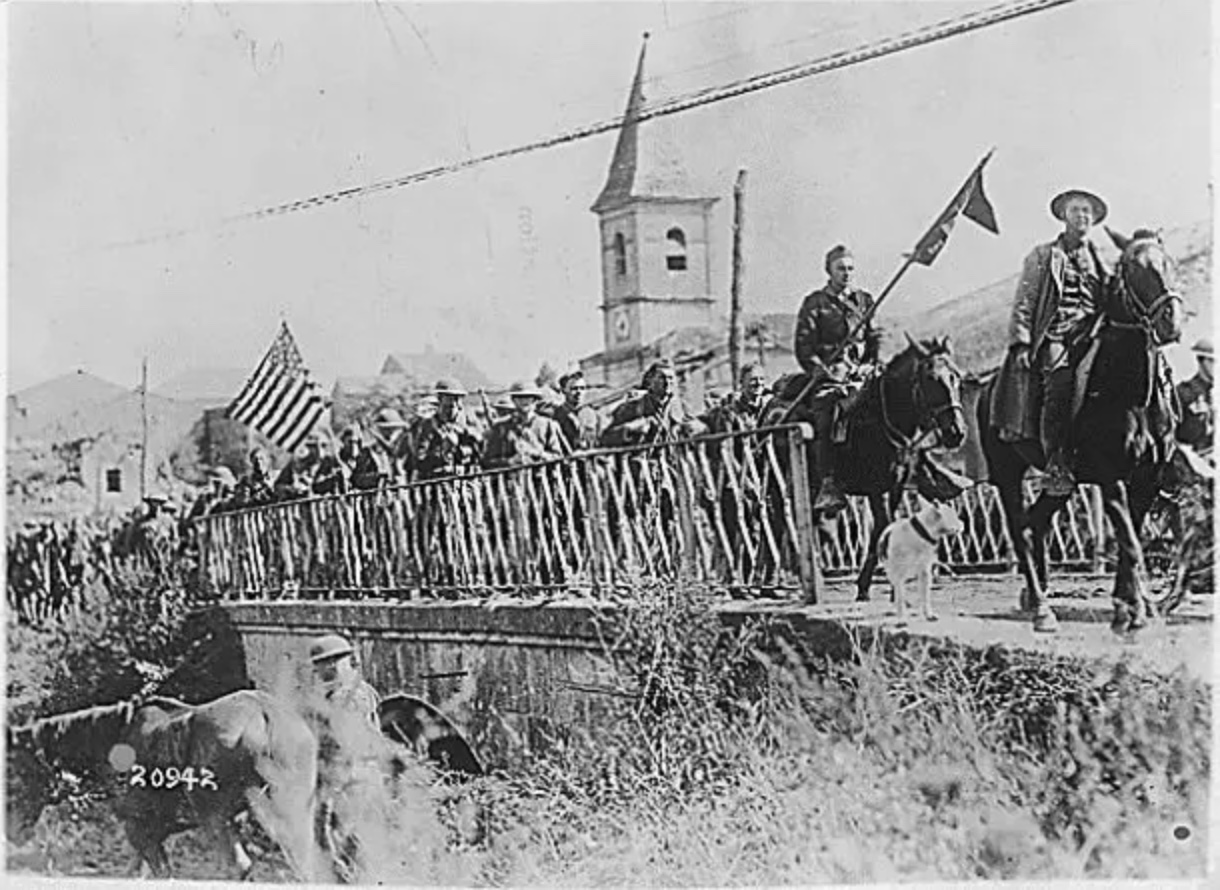American Battles and Campaigns of World War One
The United States entered World War One on April 6, 1917 on the side of the Allies. The war in Europe that began in August, 1914, had already claimed millions of lives, as the Allies (Britain, France, Canada, Australia, New Zealand, Italy, Russia, Belgium, Portugual, and others) battled against the Central Powers (Germany, Austria-Hungary, Bulgaria, and the Ottoman Empire). The U.S. contribution to the war effort significanlty bolstered the Allies with millions of fresh troops, and gave the beleaguered French public a big boost in morale.
Nearly 4.7 million Americans served in the military during World War One.
A total of 116,516 American troops died in World War One, making it the third deadliest war in U.S. history after the Civil War and World War Two. Approximately 205,000 Americans were wounded in World War One. To that point in time, this was the deadliest American foreign war in American Military History.
Two future U.S. Presidents served in the military during World War One. Harry Truman was an artillery officer and saw battle in France. Dwight Eisenhower was an Army officer during World War One, but served stateside and did not see combat.
Battle of Cambrai (November 20, 1917- December 4, 1917)-American forces had just recently begun arriving in France, and, though this was the first combat for U.S. troops, American soldiers played a minor role in this battle against the Germans. Cambrai is considerd a primarily British battle.
Somme Defensive (March 21, 1918 – Apri1 6, 1918)
Battle of Lys (April 9 – 27, 1918)
Belleau Wood Campaign-In the summer of 1918, the Germans were able to transfer 50 army divisions to the Western Front due to the surrender of the Russians on the Eastern Front. The German Spring, 1918 Offensive would test the ability of the new American armies in France.
Battle of Cantigny (May 27 – June 5, 1918)-The first full battle by the U.S. forces in World War One, and the first American offensive against the Germans.
The Battle of Belleau Wood (June 1-26, 1918)-U.S. Army and Marine Corps troops engaged the Germans
The Battle of Château-Thierry (July 18, 1918)-Part of the larger Battle of the Marne/Belleau Wood Campaign, U.S. and French troops pushed back against German forces
Second Battle of The Marne (July 18 – August 6, 1918)-After the failure of the Spring, 1918 German Offensive, the Germans launched what would be their last offensive on the Western Front in the Second Battle of the Marne. The German offensive was halted by combined British, French, and American forces. Following this Allied victory, the Allies began their offensive that would take them into Germany and victory. When nearly cut off by the retreat of other Allied units, the U.S. 3rd Infantry Division commander Major General Joseph Dickman, communicated to the French military “Nous Resterons La – We shall remain here.” The 3rd Infantry Division remained rock solid at the Battle of the Marne, and earned the nickname “Rock of the Marne.”
Hundred Days Offensive in World War One
Somme Offensive (August 8, 1918 – November 11, 1918)
Battle of Oise-Aisne (August 18, 1918- November 11, 1918)
Battle of Ypres-Lys (August 19, 1918 – November 11, 1918)
Battle of St. Mihiel (September 12 – 16, 1918)-This was first and only offensive launched by the United States Army in World War I without any other Allied participation. This Amercan attack caught the Germans by surprise and was a success. The Battle of St. Mihiel also marks the first use by the United States military of the terms “H-Hour” and “D-Day.”
Vittorio Veneto Offensive (October 24, 1918 – November 4,1918)-The only U.S. ground action not on the Western Front. The 332nd U.S. Infantry Regiment took part in the Italian campaign against Austria-Hungary in the Italian Alps.
Copyright © 1998-2023 History Guy Media; Last Modified: 11.15.23

